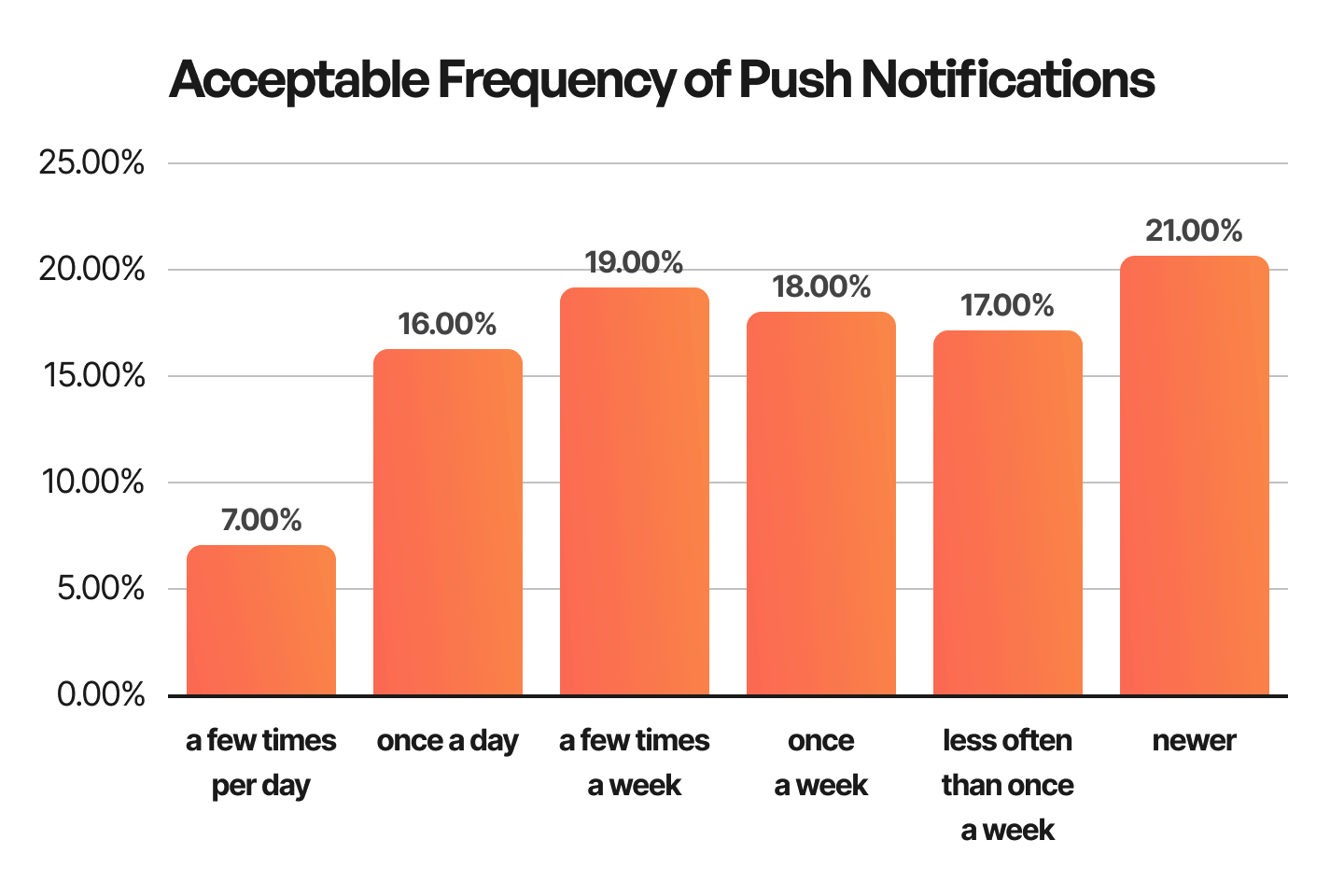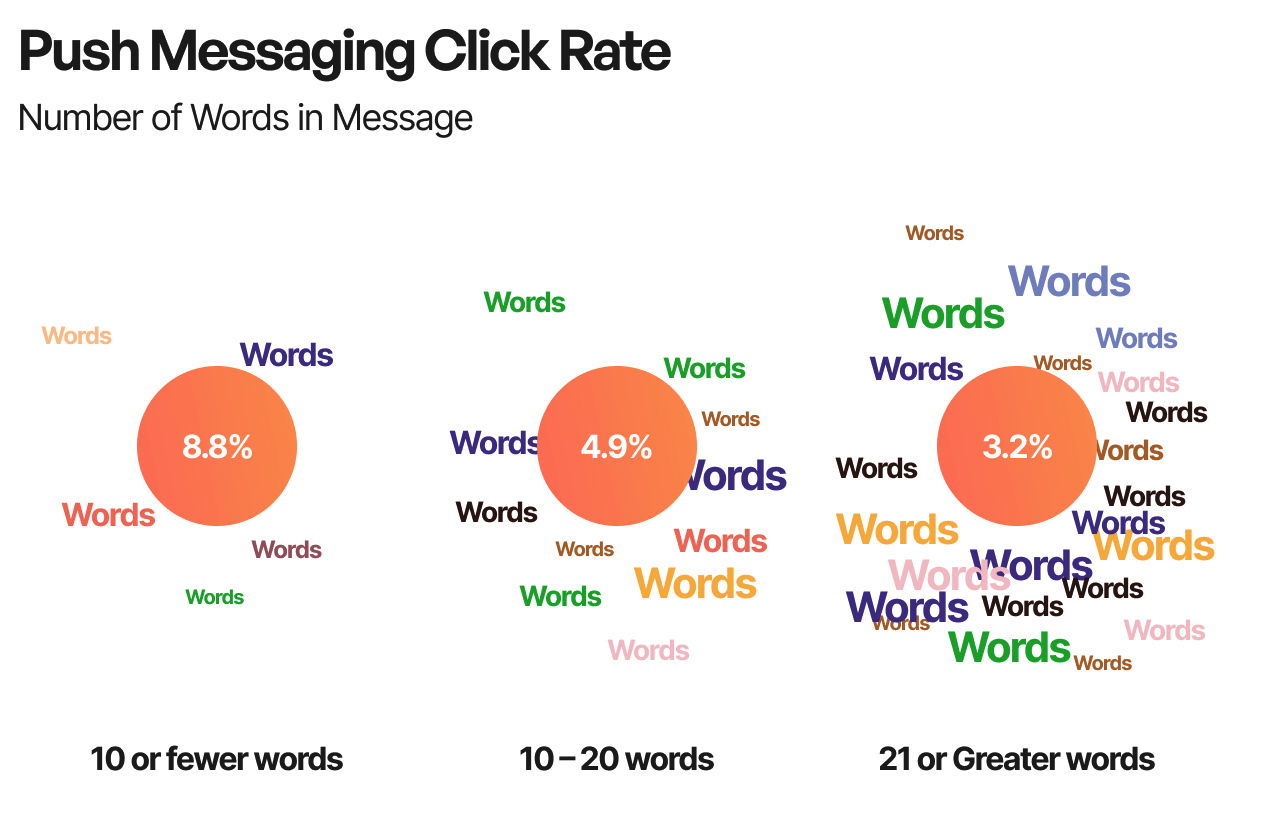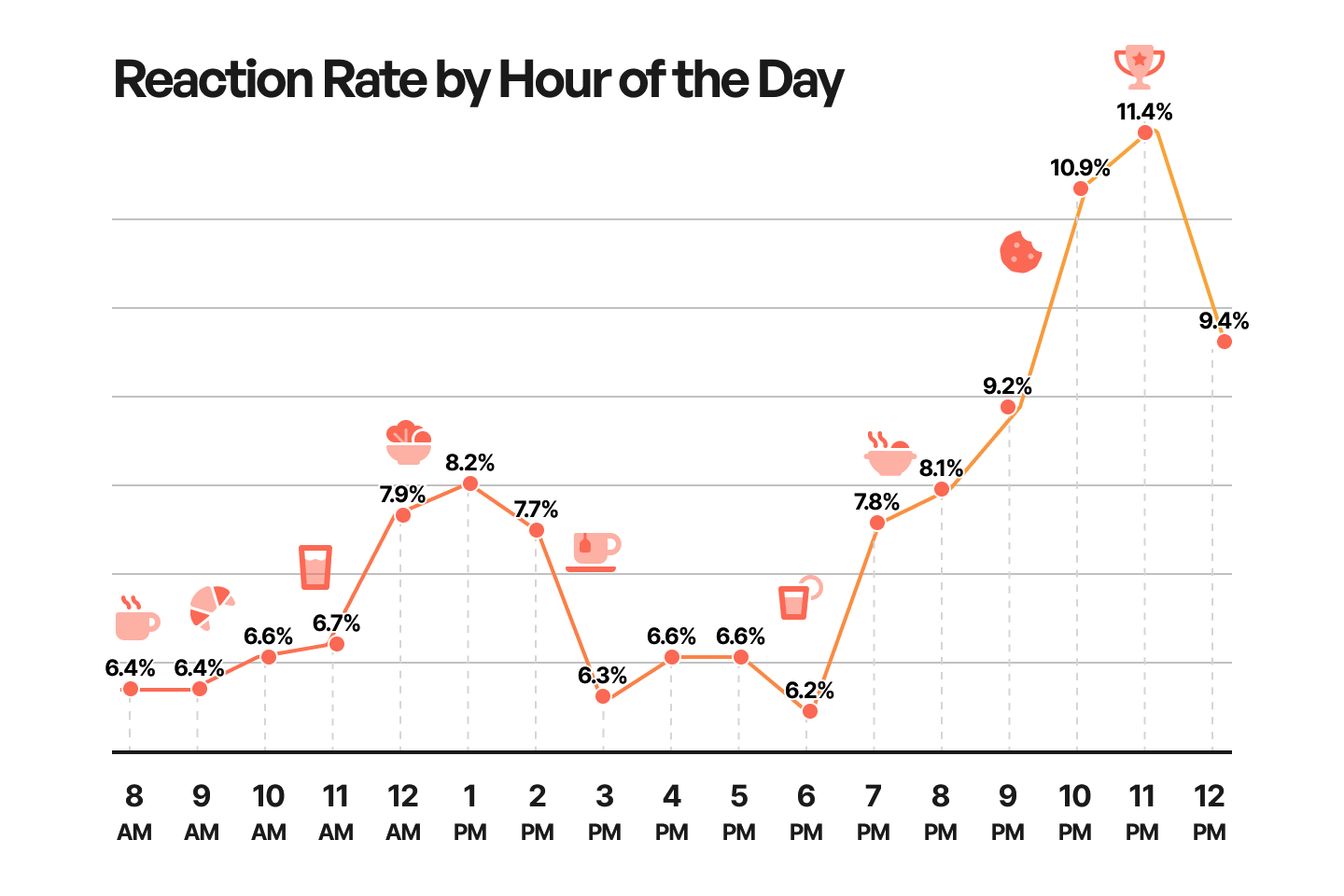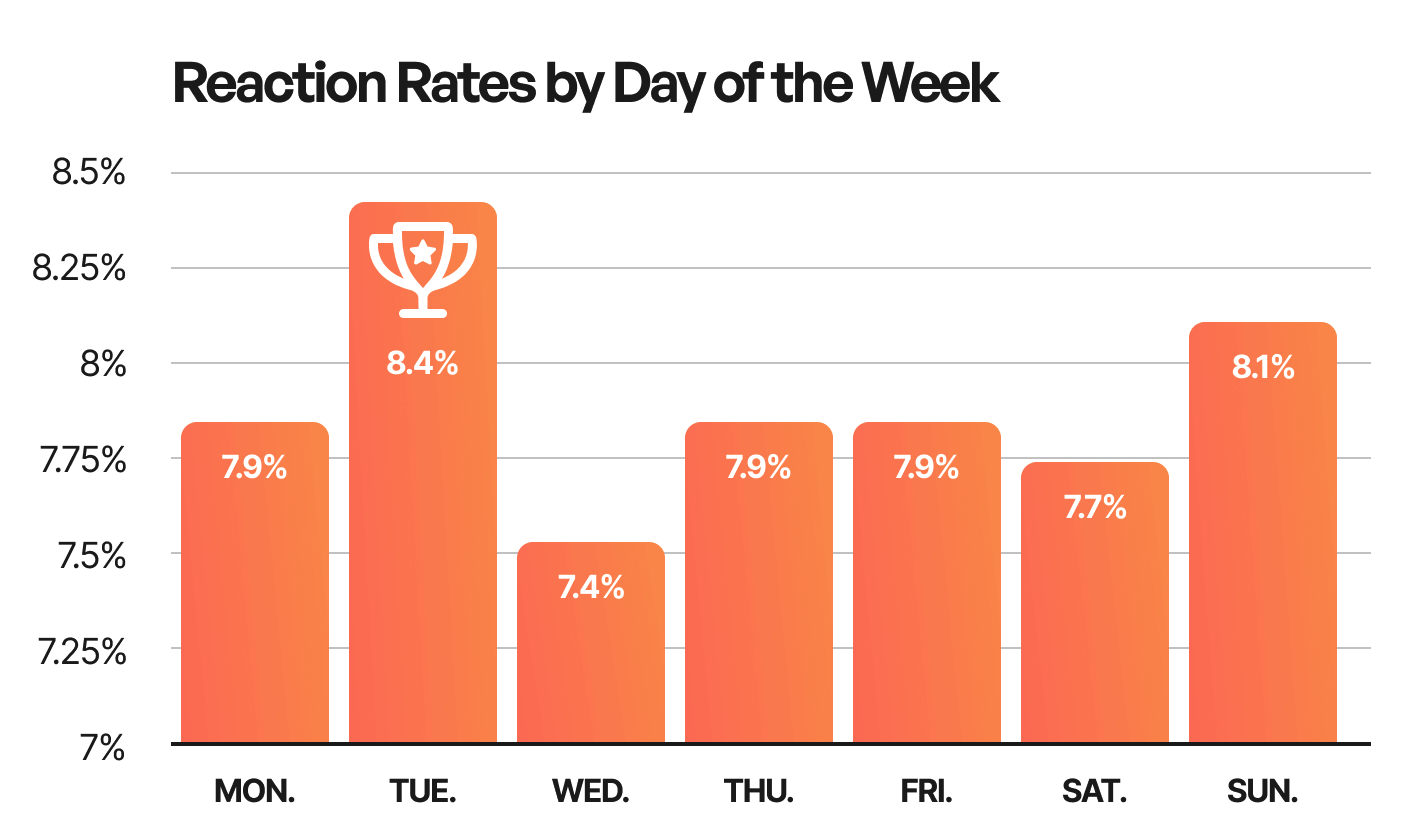Mobile Push: best practices
The Mobile Push tab enables designing mobile push notification and displaying it to the selected segments of customers by rendering the notification to their mobile phones.
With the Mobile Push, you will automate significant touches between users and your company, along with contacting the users at the most convenient time. While 70 % of mobile users believe push notifications are useful, it is crucial not to annoy customers with continuous notifications coming. Remember that notifications appear directly on the user’s device screens and good practice is to send valuable content and prevent spamming of your customers.
Here are best practices for using Mobile Push to get the most efficiency from them:
Be sure it is relevant and contains valuable information
Application users struggle with a lot of information coming to their devices, so make sure there is a valid ground for breaking into your customers' daily lives. If you want your clients to have a proper impression every time they engage with your app and business, tend to mentor and help them as the natural process of your app.
Create urgency
Capture the attention of the notification reader by making it urgent and providing the right reason for this. For example, add deadlines to notifications, send limited offers, promote time-limited campaigns, notify about products that are about to finish in stock soon, etc.
Be brief and precise
Push notifications with less text receive more actions from their readers. Briefness easily grabs the reader's attention and initiates an immediate response to received messages.
Choose the right moment
It is essential to understand your customers' schedules and interact with them at an appropriate time. Display time with the time zone of your users and notify them at suitable moments (e.g. not during the nighttime when most people are asleep).
Keep in mind about frequency
When it comes to the frequency of sending push notifications, the right frequency varies from one type of business to another. Let's say, if you are a banking system that notifies your customers about all transactions with their banking card, that would make more sense to notify users with every transaction done, even if there were more than 10 pushes sent in a day. While if you are a brand related to selling goods, sending push notifications twice a week is the most right way to remind users of different promotions, ad campaigns, abandoned baskets, etc.
Remember if mobile push notifications are sent too frequently, this can provoke users to disable receiving notifications from your app at all.
Make it personal
The best efficiency of notifications is achieved when they are tailored with personal information. You can call your users by name, recommend a specific product or category based on their purchases, inform them about events in their hometowns, etc. These notifications are more likely to capture their attention and lead to expected actions.
Inform about promotions that users might be interested in
A good practice is to inform customers about price drops and holiday sales to inspire them to make impulse purchases. This mechanism could be a valuable way to boost sales for e-commerce and give clients an obvious advantage.
It is actionable
Make sure that by clicking on the received notification, the user will be redirected to the app, website, exact article, link to subscription, etc. Or you can use buttons with “Book Now” or “Subscribe”, which is also the right approach to stimulate action.
To sum up, to get the most benefits from the push notification strategy, mind the message content, choose the right moment, send only valuable information, regularly monitor primary indicators to evaluate campaign effectiveness, and always focus on quality over quantity!
Statistics for inspiration
Data sources: Uplandsoftware, MarketingCharts, Accengage, Businessofapps




